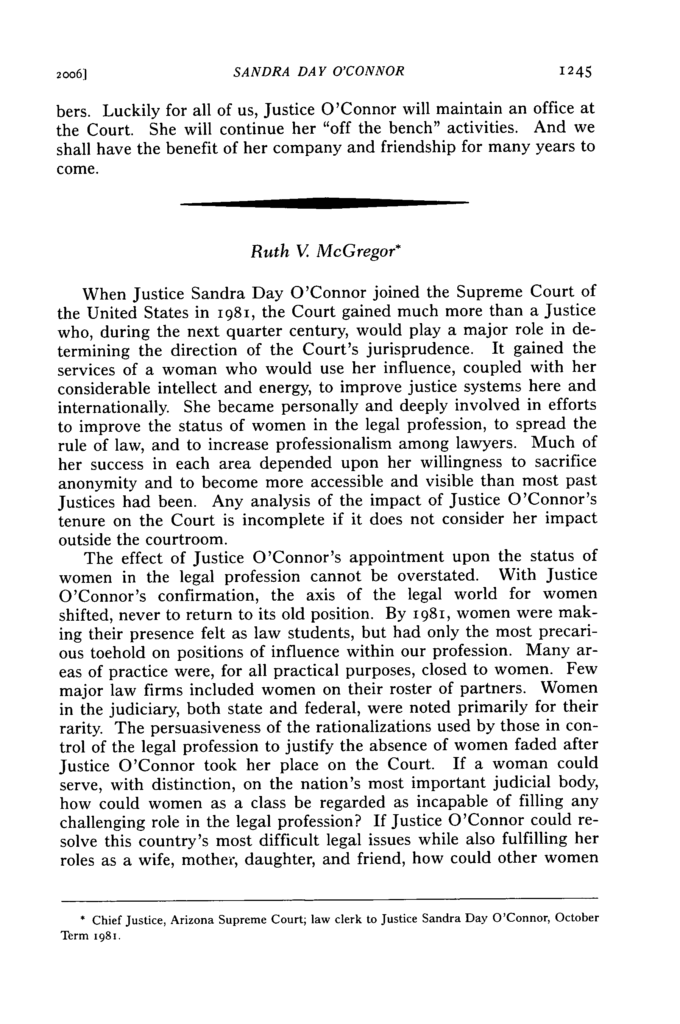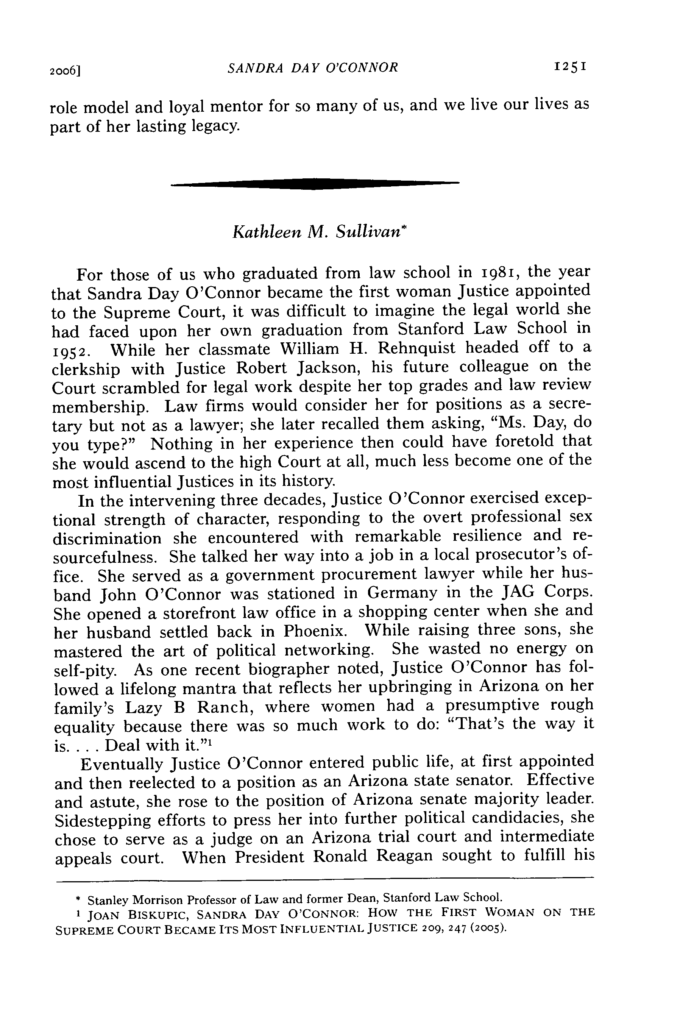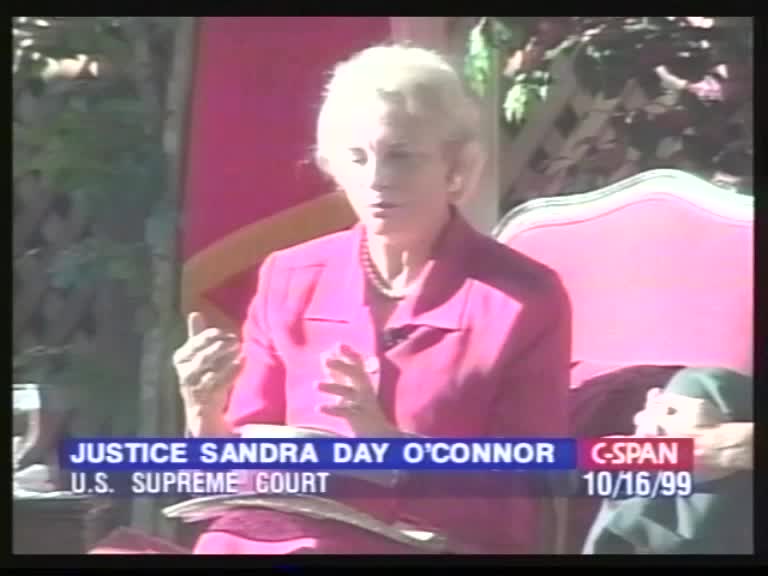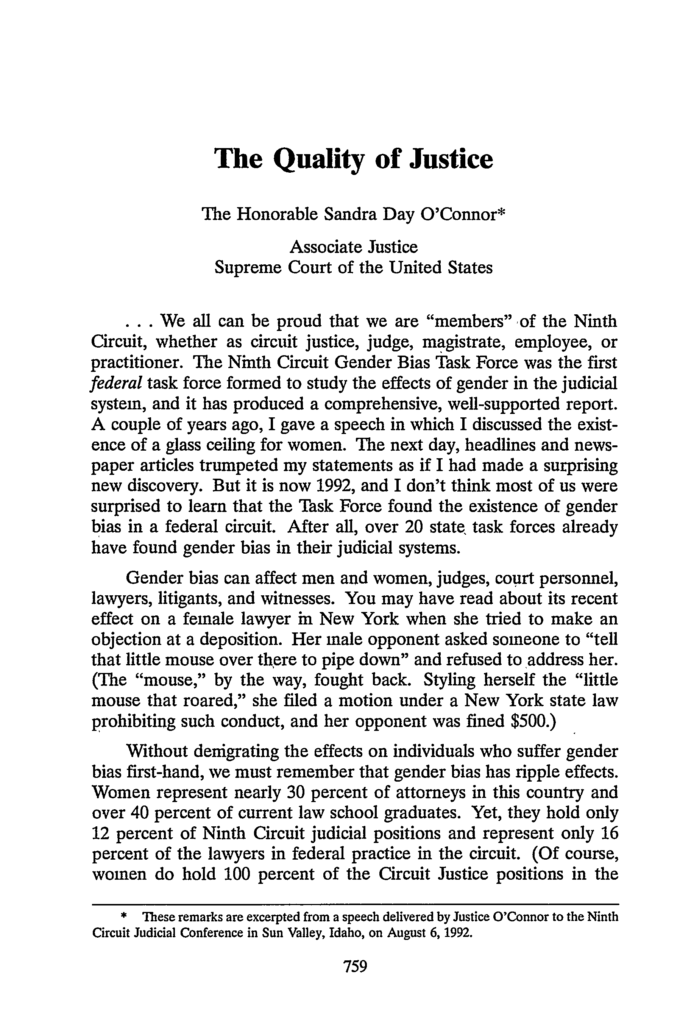A Tribute to Justice Sandra Day O’Connor
Ruth V. McGregor*
When Justice Sandra Day O’Connor joined the Supreme Court of the United States in 1981, the Court gained much more than a Justice who, during the next quarter century, would play a major role in de termining the direction of the Court’s jurisprudence. It gained the services of a woman who would use her influence, coupled with her considerable intellect and energy, to improve justice systems here and internationally. She became personally and deeply involved in efforts to improve the status of women in the legal profession, to spread the rule of law, and to increase professionalism among lawyers. Much of her success in each area depended upon her willingness to sacrifice anonymity and to become more accessible and visible than most past Justices had been. Any analysis of the impact of Justice O’Connor’s tenure on the Court is incomplete if it does not consider her impact outside the courtroom.
The effect of Justice O’Connor’s appointment upon the status of women in the legal profession cannot be overstated. With Justice O’Connor’s confirmation, the axis of the legal world for women shifted, never to return to its old position. By 1981, women were mak ing their presence felt as law students, but had only the most precarious toehold on positions of influence within our profession. Many areas of practice were, for all practical purposes, closed to women. Few major law firms included women on their




